Near-infrared light therapy can boost your brain's natural healing abilities after trauma or injury. It works by penetrating deep into your brain tissue, where it stimulates the mitochondria in your brain cells to produce more energy (ATP). You'll benefit from increased blood flow, reduced inflammation, and enhanced cellular repair throughout your brain. The therapy has shown promising results for conditions like traumatic brain injury, PTSD, and cognitive decline. Using specific wavelengths around 810nm for just 10 minutes per treatment area, three times weekly, can improve your brain function and support long-term recovery. The science behind this breakthrough treatment reveals even more remarkable benefits.
Understanding Near-Infrared Light
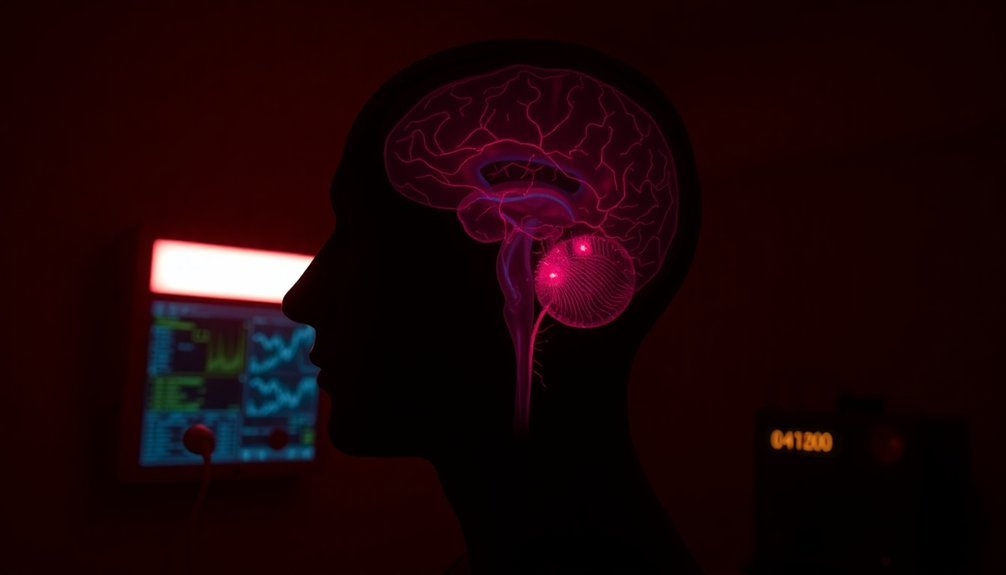
Near-infrared light occupies a fascinating sweet spot in the electromagnetic spectrum, positioned just beyond the visible light that our eyes can detect. With wavelengths ranging from 751 to 1,400 nanometers, it's the closest infrared neighbor to the red light you can see, though you won't be able to spot NIR with your naked eye.
You'll find NIR's unique properties make it particularly valuable for medical and therapeutic applications. Unlike visible light, which often can't penetrate deeply into tissue, NIR can reach deeper layers, including brain cells. This penetration ability stems from NIR's longer wavelengths, which interact differently with human tissue than visible light does. This therapy works by activating cellular mitochondria, promoting increased energy production in brain cells.
When you're looking to understand NIR's technical aspects, you'll need to think about how it works within the broader electromagnetic spectrum. It's based on molecular overtone and combination vibrations, which allow it to penetrate bulk material effectively.
Scientists and medical professionals use NIR spectroscopy for various purposes, from analyzing blood sugar levels to conducting functional neuroimaging. They'll typically deliver NIR using specialized equipment like LEDs or lasers, carefully controlling the light dose and delivery mode to achieve the best results.
Brain Cell Power Generation
When you receive near-infrared light therapy, it kicks your brain cells' mitochondria into high gear by stimulating the cytochrome c oxidase enzyme.
Your cells respond by ramping up ATP production, which serves as their primary energy source for all cellular functions.
This boost to your cellular powerhouse triggers a cascade of beneficial effects, including enhanced energy metabolism and improved cellular repair mechanisms. The increased energy production promotes cerebral blood flow, delivering vital oxygen and nutrients throughout the brain.
Mitochondrial Energy Boost Process
Like tiny powerhouses within brain cells, mitochondria receive a significant boost from near-infrared light therapy through a precise molecular process. When NIR light penetrates your brain tissue, it targets cytochrome c oxidase (COX), a vital enzyme in mitochondrial function. This interaction reduces COX activity in a controlled, intensity-dependent manner, leading to enhanced mitochondrial dynamics and quality control. Brain cells naturally operate in a low oxygen environment of 2-5% oxygen levels.
You'll find that NIR light's effects go beyond basic cellular function. It actively decreases mitochondrial swelling and promotes mitophagy, which means your brain cells can maintain healthier mitochondria. This process directly impacts your cognitive function and may even lower your risk of developing Alzheimer's disease as you age.
What's particularly remarkable is that NIR light can reach deep into your brain tissue with minimal heating effects. FDA approval for musculoskeletal conditions demonstrates its safety, and ongoing research shows promising results in various brain-related conditions. When your brain cells' mitochondria function efficiently, they're better equipped to generate the energy needed for recovery, especially following injuries like those sustained during cardiac arrest.
Light-Activated ATP Production
Ever wonder how your brain cells generate their incredible power? Through light-activated ATP production, your brain's mitochondria can harness energy directly from near-infrared light to boost their power output. This process works through specialized proton pumps that convert light energy into chemical energy, ultimately producing more ATP – your cells' primary energy source.
When you undergo near-infrared light therapy, it increases your mitochondria's membrane potential, leading to enhanced ATP production through oxidative phosphorylation. This boost in cellular energy doesn't just improve your brain's power supply; it also reduces inflammation and increases circulation, supporting clearer thinking and better overall brain function. Similar to how bioluminescent reactions in nature produce light and energy, this therapy harnesses light to activate cellular processes.
You'll find that this enhanced ATP production can help with various neurological conditions. Research shows promising results for anxiety, depression, PTSD, and traumatic brain injury recovery.
The therapy's ability to stimulate mitochondrial activity benefits your neurons and other brain cells, potentially offering relief from symptoms of these conditions. Scientists are continuing to explore new applications through clinical trials, focusing on understanding how mitochondria respond to light therapy and developing more effective treatments for neurological disorders.
Cellular Powerhouse Enhancement
Near-infrared light's impact on brain cell power goes beyond basic ATP production, targeting your cellular powerhouses directly. When near-infrared wavelengths between 810nm and 1064nm penetrate your skull, they activate cytochrome c oxidase, a key enzyme in your mitochondria. This activation triggers a cascade of biological processes that enhance your brain cells' energy production and repair mechanisms.
Your brain's cellular powerhouses respond to this therapy through multiple pathways that work together to boost overall brain health:
- The light therapy reduces inflammation markers while simultaneously increasing mitochondrial ATP production, giving your brain cells more energy to function at their best.
- It stimulates the production of growth factors like BDNF, which supports the creation of new neural connections and promotes neuroplasticity.
- Daily two-minute exposures to near-infrared light at 75-150 mW/cm² can trigger lasting improvements in cellular repair and energy metabolism.
This enhanced cellular power generation isn't just theoretical – clinical trials show it's particularly effective for treating traumatic brain injuries and improving cognitive function in older adults. The therapy's ability to penetrate deep into brain tissue while remaining low-risk makes it a promising treatment for various neurological conditions.
Healing After Brain Trauma
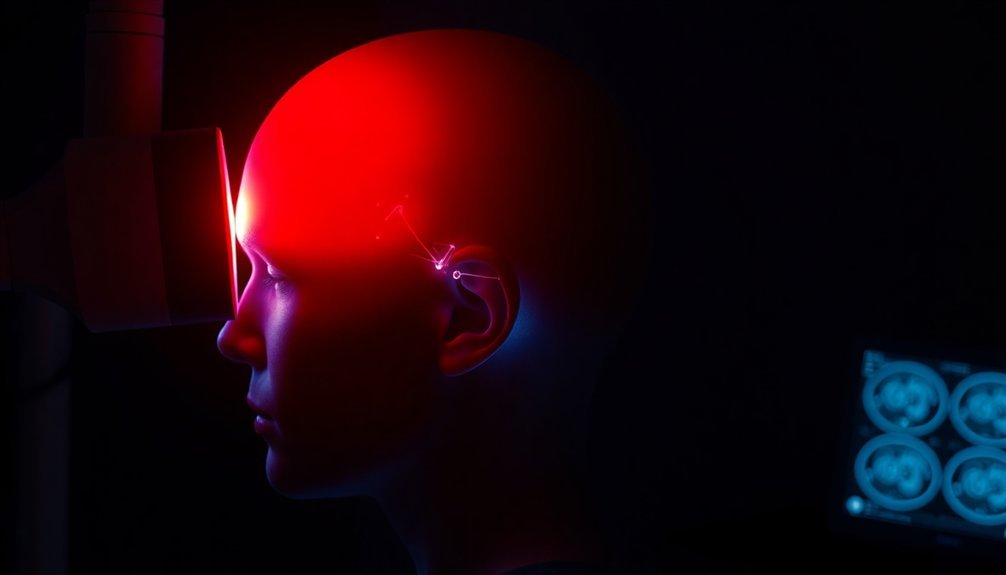
When your brain experiences trauma, near-infrared light therapy offers promising pathways to recovery through multiple healing mechanisms. Research shows that wavelengths of 660nm and 810nm, particularly when combined, effectively reduce inflammation by decreasing astrocyte and microglial activation. The 810nm wavelength has demonstrated the strongest anti-inflammatory effects and helps reduce cell death markers.
Near-infrared light doesn't just fight inflammation – it actively protects and promotes brain cell growth. It boosts cellular energy production, enhances nerve cell survival, and stimulates new neural growth, leading to improved functional recovery after injury.
While this therapy shows promise for treating moderate TBI, PTSD, and depression, it's important to understand its current limitations. Standard low-level LED devices don't penetrate the skull effectively. You'll need higher fluence rates between 0.9 J/cm² and 15 J/cm² for meaningful photobiomodulation.
Scientists are working to develop more effective medical devices, as current research indicates that successful treatment requires more powerful delivery methods than conventional LED approaches. Future studies with larger patient groups will help determine the most effective clinical applications.
Blood Flow Benefits
Understanding how blood flows through your brain is essential to grasping the power of near-infrared light therapy. When near-infrared light penetrates your brain tissue, it triggers the release of nitric oxide, which enhances circulation and helps deliver essential oxygen and nutrients to your brain cells.
This improved blood flow doesn't just support regular brain function – it's pivotal for recovery and healing.
The therapy works by interacting with your cells' mitochondria, specifically targeting cytochrome c oxidase. This interaction leads to increased production of ATP, your cells' energy currency, and reduces harmful reactive oxygen species.
You'll benefit from enhanced blood flow that helps remove waste products and reduces inflammation in damaged areas.
- Near-infrared light therapy has shown promising results in improving blood flow during rehabilitation, particularly when combined with other treatments like EMG-FES
- The treatment can be administered at various locations due to its portability, making it convenient for ongoing therapy
- Clinical studies demonstrate its effectiveness in enhancing blood flow for patients with traumatic brain injury, supporting faster recovery
Your brain's healing process accelerates when blood flows properly, and near-infrared light therapy helps create ideal conditions for this natural recovery mechanism.
Reducing Brain Inflammation
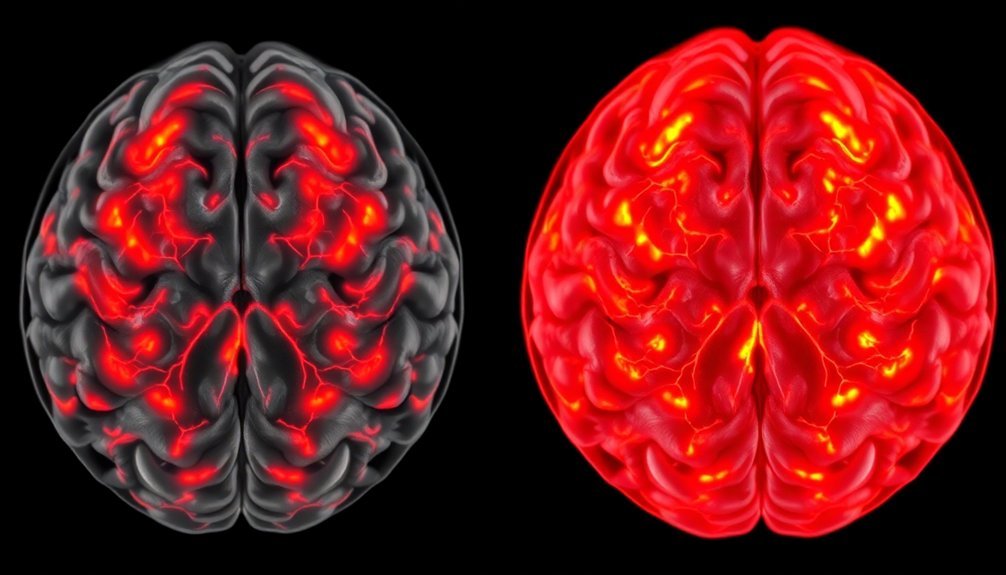
When you receive red light therapy, your brain's microglial cells rapidly shift from a pro-inflammatory to an anti-inflammatory state.
This change helps control damaging inflammation that can persist after injuries or neurological conditions.
You'll notice reduced brain swelling as the treatment modulates key inflammatory markers and triggers natural healing processes.
Microglial Activity Decreases
Through extensive research, near-infrared light therapy has shown remarkable success in reducing microglial activation – a key factor in brain inflammation following traumatic injury.
You'll find that daily 2-minute bursts of infrared light, particularly at 810nm wavelength, delivered transcranially for just three days post-injury can substantially decrease microglial activity and improve recovery outcomes.
When you're dealing with brain trauma, microglial cells act as immune sentinels, orchestrating inflammatory responses that can sometimes worsen patient outcomes. Near-infrared light therapy offers a protective effect against these inflammatory processes, as demonstrated through histology and immunohistochemistry studies showing reduced astrocyte and microglial activation.
- Daily treatment sessions reduce biochemical markers of cell death while promoting better functional recovery
- The therapy's effectiveness is particularly notable at 810nm wavelength, showing superior results compared to 660nm
- Research indicates improved balance and cognitive function in treated subjects compared to control groups
This breakthrough in understanding how near-infrared light affects microglial activity opens new possibilities for treating traumatic brain injuries, an area of medicine that's traditionally had limited treatment options.
Brain Swelling Rapidly Subsides
Many patients experience significant reductions in brain swelling when treated with near-infrared light therapy, particularly in the critical hours following injury. This therapy works through multiple mechanisms to combat inflammation and promote healing.
When near-infrared light penetrates your brain tissue at wavelengths between 600-1100 nm, it triggers a cascade of beneficial effects.
The therapy improves blood flow to your brain, which helps remove excess fluid and reduce swelling. The 810 nm wavelength has proven especially effective, as it penetrates deeply and activates your brain's natural healing processes. It's particularly significant that the therapy reduces oxidative stress and activates your mitochondria, providing your brain cells with the energy they need to recover.
The treatment's systemic anti-inflammatory effects don't just target your brain – they work throughout your body. As your brain swelling subsides, you'll likely notice improvements in cognitive function and overall recovery.
Research using rat models has consistently shown that this non-invasive approach effectively reduces inflammation while promoting neurogenesis, helping your brain repair damaged tissue and restore normal function.
Cell Growth And Protection
Near-infrared light therapy offers several key mechanisms that promote cell growth and protect against damage in brain tissue. When you receive this treatment, it works by reducing markers of cell death while simultaneously stimulating the growth of new nerve cells. You'll find it particularly effective in enhancing tissue repair and improving functional recovery, especially after mild traumatic brain injuries.
The therapy's protective effects are equally impressive, as it shields your brain from secondary damage through multiple pathways.
- Reducing inflammation by decreasing the activation of astrocytes and microglial cells
- Boosting ATP production and improving blood flow to damaged areas
- Decreasing oxidative stress through photobiomodulation at the cellular level
Your brain's recovery benefits from this non-invasive approach, as it triggers essential cellular mechanisms. The light therapy enhances mitochondrial function, leading to increased energy production in your cells.
This boost in cellular energy helps drive tissue repair and supports new cell growth. When combined with its anti-inflammatory properties, near-infrared light therapy creates an ideal environment for your brain's natural healing processes, ultimately improving your chances of better recovery outcomes.
Treatment Duration And Wavelengths
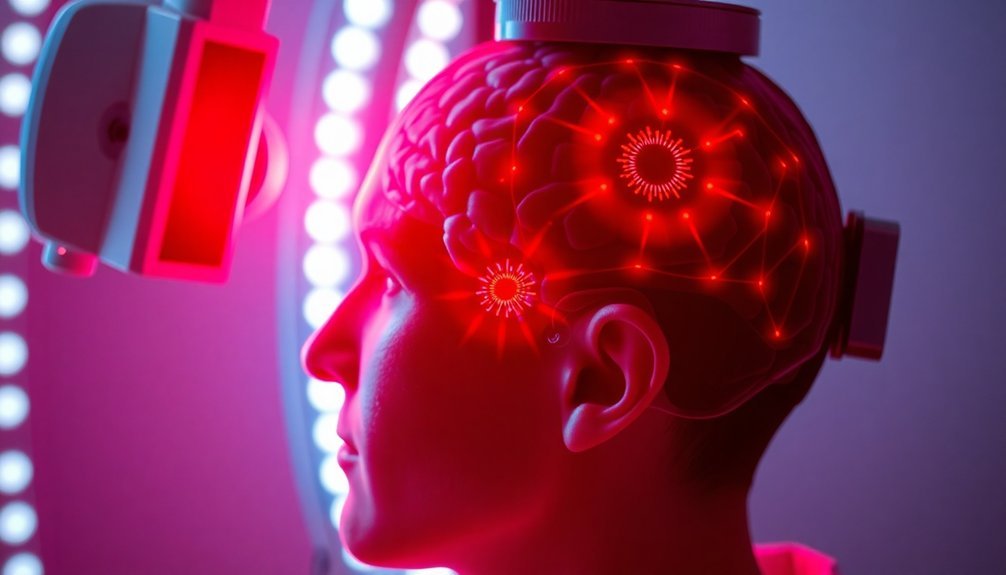
You'll need to commit to consistent near-infrared treatment sessions of 10 minutes per site, three times weekly for about 6 weeks, though improvement may take 1-4 weeks to become noticeable.
For the best brain recovery, you should focus on using 810nm wavelength light, which has shown superior results compared to 660nm in promoting neurological healing and reducing inflammation.
Your treatment's effectiveness depends on achieving the right fluence levels between 0.9 J/cm^2 to 15 J/cm^2, which guarantees proper activation of biological processes in damaged brain tissue.
Optimal Treatment Session Length
Research on ideal treatment session lengths reveals significant variations across different studies, with protocols ranging from brief two-minute sessions to extended 10-minute applications per brain site.
You'll find that while some researchers have achieved results with short daily bursts of infrared light over three days, others recommend longer sessions spread across several weeks. The evidence suggests that multiple sessions are necessary to achieve noticeable improvements, with patients typically experiencing benefits after 1-4 weeks of consistent treatment.
When you're considering treatment duration, it's important to understand that session length often depends on the specific therapeutic goals and the wavelength being used. Clinical trials have shown success with structured approaches, particularly when targeting multiple brain sites.
- Three-day protocols using two-minute daily bursts have shown promise in early post-injury treatment
- Six-week programs applying 10-minute sessions to each of eleven brain sites, three times weekly, have demonstrated significant improvements
- Research indicates that consistent treatment over 1-4 weeks is typically needed before patients notice substantial benefits
The key is maintaining consistency with your chosen protocol while monitoring progress throughout the treatment period.
Daily Exposure Guidelines
Clinical guidelines for near-infrared therapy point to specific parameters that optimize brain recovery outcomes. If you're undergoing treatment, you'll typically receive daily two-minute bursts of infrared light, though some clinical trials extend sessions to 10 minutes per targeted brain site.
You'll notice significant improvements after 1-4 weeks of consistent treatment, with most clinical trials scheduling sessions three times per week for six weeks.
The most effective wavelengths for brain recovery fall between 600-900nm, with 660nm and 810nm being the most commonly used. You'll find that 810nm wavelengths deliver superior results compared to 660nm, while the 600nm range merges with visible red light.
Your treatment will be delivered through non-invasive external devices, using either low-power lasers or LEDs that penetrate your scalp and skull to reach the brain tissue.
Following these guidelines, you can expect notable improvements in cognitive function, balance, and psychological symptoms. The therapy has shown significant success in reducing inflammation, cell death, and suicidal thoughts while enhancing sleep quality and mood.
There are no known adverse effects from this treatment approach.
Wavelength Selection For Recovery
Selecting the most effective wavelength for near-infrared therapy substantially impacts brain recovery outcomes. Research shows that 810nm wavelength delivers superior results compared to 660nm, particularly in reducing inflammation and promoting functional recovery. While combined wavelengths of 660/810nm show promise, they don't surpass the effectiveness of 810nm alone.
Treatment duration plays a vital role in the therapy's success. You'll find various protocols, from daily 2-minute exposures over three days to longer 20-minute sessions with 12-hour intervals. Some studies even demonstrate benefits from extended 8-week treatment periods, showing improvements in brain volumes and connectivity.
- 810nm wavelength demonstrates the best results for reducing astrocyte and microglial activation, leading to decreased inflammation
- Treatment sessions can vary from 2-20 minutes, but consistency in application remains essential for effectiveness
- Studies show significant reductions in cell death markers when using infrared light therapy, particularly with the 810nm wavelength
The development of standardized medical devices for transcranial near-infrared therapy is underway, with ongoing research exploring how different wavelengths affect specific cellular processes. This advancement could revolutionize treatment protocols for brain injuries and potentially expand to other neurological conditions.
Brain Recovery Success Stories
Remarkable stories of brain recovery through near-infrared light therapy continue to emerge from both clinical studies and real-world applications.
Clinical research shows patients with traumatic brain injuries experiencing significant improvements in symptoms, including resolution of chronic headaches, insomnia, and cognitive difficulties.
You'll find these benefits aren't just temporary – they've been sustained for years after treatment.
Veterans at the VA Boston Healthcare System have received promising results using near-infrared therapy for Gulf War Illness and traumatic brain injuries.
The therapy's success lies in its ability to boost ATP production in your brain cells and increase cerebral blood flow, leading to clearer thinking and improved cognitive function.
When you combine LED therapy with cognitive rehabilitation, you'll see enhanced recovery outcomes.
Studies using high-power near-infrared light have demonstrated remarkable success in treating chronic TBI patients, helping them return to work and normal daily activities.
The therapy's effectiveness is backed by objective evidence, including SPECT scans showing improved brain perfusion and MRI scans revealing increased blood flow – all while maintaining an excellent safety profile.
Current Medical Applications
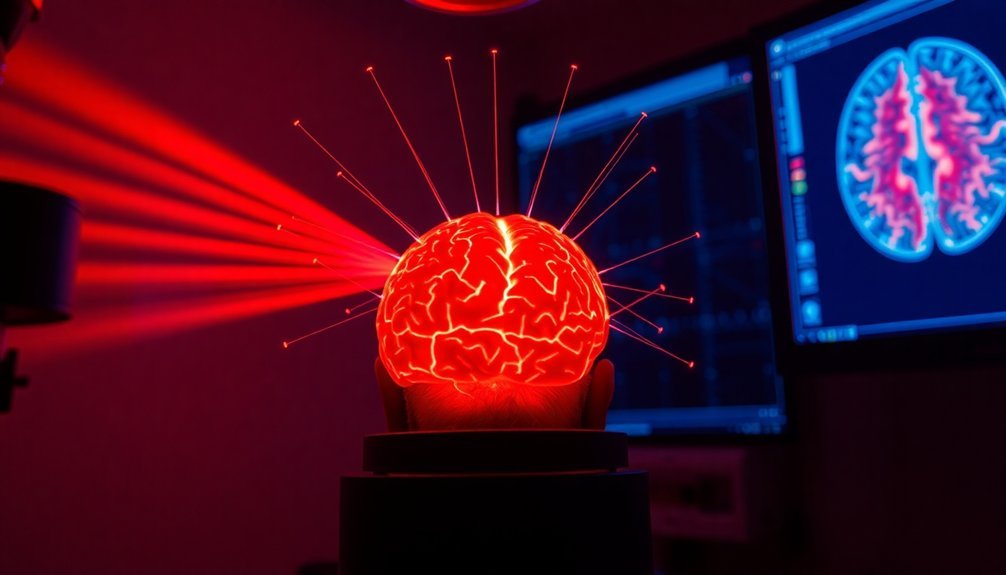
Several medical applications of near-infrared light therapy have emerged as promising treatments for brain injuries and disorders. When you receive NIR therapy, the light penetrates your scalp and skull up to 40mm deep, where it stimulates ATP production in your brain's mitochondria and improves blood flow.
This non-invasive treatment typically involves 2-minute bursts of light at specific wavelengths, particularly 660nm and 810nm.
You'll find NIR therapy being used to treat both acute and chronic traumatic brain injuries, with research showing improvements in symptoms like headaches, dizziness, and depression. The treatment's effectiveness stems from its ability to reduce inflammation by limiting astrocyte and microglial activation.
- Clinical studies demonstrate improved brain connectivity and increased cerebral perfusion after NIR treatment
- Commercial devices are available for both clinical and home use, though their effectiveness varies
- Daily treatments over three days post-injury have shown positive outcomes in research settings
While researchers are still working to fully understand the mechanisms behind NIR therapy's success, current evidence suggests it's a promising option for brain recovery, particularly when traditional treatments have fallen short.
Future Treatment Possibilities
Scientists envision a revolutionary future for near-infrared light therapy in brain recovery. You'll likely see this technology develop into a medical device specifically designed for treating traumatic brain and spinal cord injuries. The therapy's non-invasive nature makes it particularly promising, as it can penetrate your scalp and skull to benefit your brain directly.
What's exciting is how this treatment could help with various neurological conditions. You'll find it's being studied for anxiety, depression, PTSD, and Alzheimer's disease.
The therapy works by reducing inflammation, increasing blood flow, and boosting ATP energy production in your brain cells. It also offers neuroprotective effects by reducing the activation of astrocytes and microglial cells.
You can expect to see more large-scale clinical trials as researchers continue exploring this technology's full potential. They're actively seeking commercial partnerships to develop practical medical devices for clinical use.
With few current interventions available for brain injuries, this therapy represents a significant breakthrough. The collaboration between neuroscientists, engineers, and clinicians will be essential in bringing this promising treatment option to your local medical facilities.
Frequently Asked Questions
Are There Any Side Effects or Risks Associated With Near-Infrared Therapy?
You'll need to be cautious with near-infrared therapy as it can cause eye damage, cataracts, skin burns, headaches, and dehydration. Always wear protective eyewear and consult your doctor before starting treatment.
How Much Does Near-Infrared Light Therapy Typically Cost for Brain Treatment?
You'll typically spend $50-200 per session for professional brain treatments. If you're interested in home devices, they range from $200-1,200, while clinical-grade equipment can cost up to $5,000.
Can Near-Infrared Therapy Be Combined With Other Brain Recovery Treatments?
Yes, you can safely combine near-infrared therapy with other brain treatments. It's often used alongside traditional therapies to enhance recovery, as it's non-invasive and works well with medications and rehabilitation programs.
Is Near-Infrared Light Therapy Covered by Health Insurance Plans?
Most health insurance plans won't cover near-infrared light therapy since it's considered experimental. You'll likely need to pay out-of-pocket for this treatment until more clinical trials prove its effectiveness for brain recovery.
How Long After Brain Injury Can Near-Infrared Therapy Still Be Effective?
You'll get the best results if you start near-infrared therapy immediately after injury, but it can still help within 4 weeks post-injury. Research suggests long-term benefits are possible through nerve cell regeneration.
In Summary
You've learned how near-infrared light can boost your brain's recovery through improved cell energy, enhanced blood flow, and reduced inflammation. While current medical applications show promise in treating brain trauma and neurological conditions, you'll likely see this technology expand in the future. Whether you're recovering from injury or seeking cognitive enhancement, near-infrared therapy offers a non-invasive option that's worth discussing with your healthcare provider.
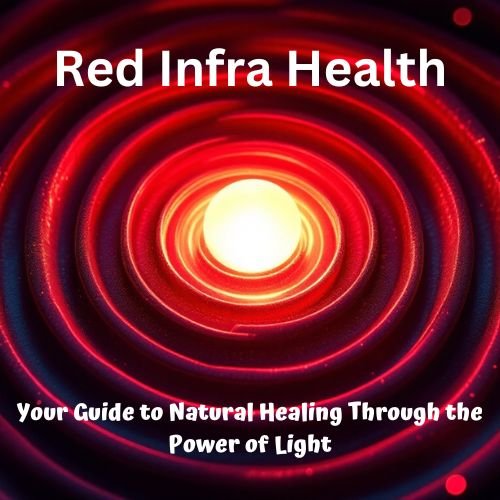
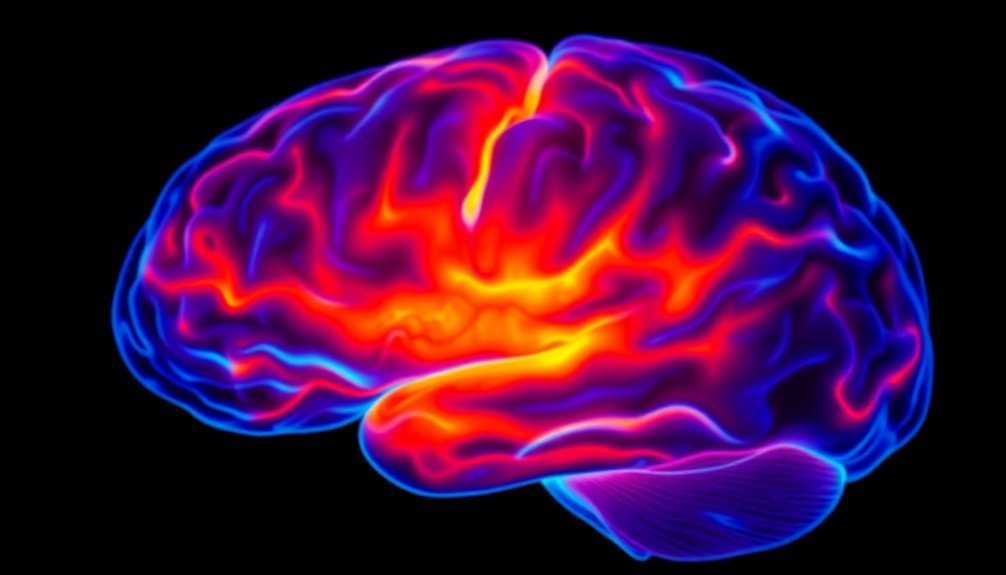

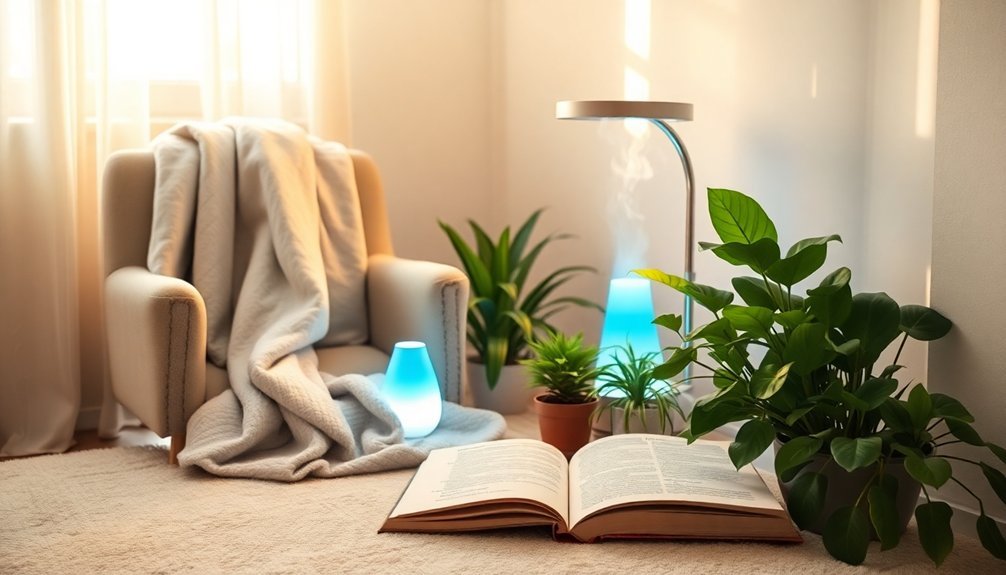

Leave a Reply